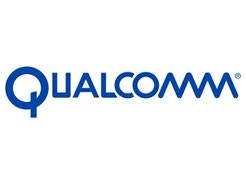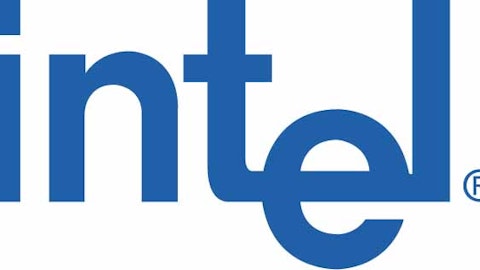
That’s primarily because Qualcomm is part of an industry whose fortunes are now increasingly dependent on emerging markets such as China and India, where less expensive chips powering lower-priced handsets have proved to be the real hot sellers. However, these chips also mean lower profit margins for companies like Qualcomm. That’s a far cry from the chips made for high-end handsets made by the likes of Apple Inc. (NASDAQ:AAPL) and Samsung that are powered by the company’s chips.
So, is this just the beginning of a long-term trend that may result in dwindling fortunes for QUALCOMM, Inc. (NASDAQ:QCOM) or is it just a one-off situation where the pros outnumber the cons? Let’s delve a little deeper and find out. To start with, let’s go through some of the possible areas where Qualcomm may be at a relative disadvantage and then try and analyze them one by one.
What’s the real issue?
The primary threat to Qualcomm’s profit margins in the future, as some analysts are anticipating, seems to be the continued possibility of lower Average Selling Prices (ASPs) of handsets. Qualcomm makes its profits mainly in two ways, one through licensing its CDMA technology and two, through the sale of its baseband chips for smartphones. However, as developed markets such as the US reach a saturation point, smartphone manufacturers are increasingly shifting focus to emerging markets where people with comparatively lesser annual incomes prefer inexpensive phones vis-à-vis the high-end ones.
This, in turn, is hurting companies like QUALCOMM, Inc. (NASDAQ:QCOM) in more ways than one. Firstly, low-end handsets require low-end chips from Qualcomm, that generate lower profit margins. At the same time, companies manufacturing inexpensive phones pay lesser licensing fees to Qualcomm. To add to its woes, Qualcomm is facing heated competition from a slew of small-sized chip manufacturers that are selling products at a loss to seize market share from the biggies. And emerging markets will continue to remain the action hotspots for the future.
A win-win situation
But, smart investors should not forget the fact that QUALCOMM, Inc. (NASDAQ:QCOM) is a company that has cleverly benefited for some time now in two prominent ways, aided by the fact that an overwhelming number of smartphones around the world use its baseband chips, along with its dominance in the 4G LTE space. On one side, the company is successfully benefiting from the massive transition from 2G to 3G technology, that is the single most dominant factor in the smartphone space in emerging countries such as China and to a lesser extent, India. At the same time, the next big step in the developed countries’ smartphone scenario is a shift towards the 4G LTE space, an area where Qualcomm’s chipsets are considered to be the industry benchmark.
So, if QUALCOMM, Inc. (NASDAQ:QCOM) successfully manages to maintain its current lead over rivals in the manufacture of 4G LTE chips, which I’m sure it will, then the volume of sales of such higher margin-generating chips in developed markets would certainly act as a countermeasure against the lower profit margins related to sales of inexpensive chips in the emerging ones. And high-end smartphones (which also mean higher profit margin-generating 4G LTE-enabled chips) are also witnessing robust sales in emerging markets as well.
Coming to the issue of royalties, the scenario should be even better for Qualcomm. That’s because 4G-based royalties tend to be a little lower than the 3G-based ones. Keeping that in mind, the massive transition to 3G technology in emerging markets should work in Qualcomm’s favor for quite some time to come, given the sheer volume of newly upgraded 3G users in China and similar nations. And the number of such users is steadily likely to go up to around 2.8 billion by the year 2014, if research firm Wireless Intel (NASDAQ:INTC)ligence is to be believed. Advantage Qualcomm!
Competition’s still far, far away
And if you ask me about the competition, all that rivals Intel Corporation (NASDAQ:INTC) and Broadcom Corporation (NASDAQ:BRCM) may be doing now is jostling for second space. Intel Corporation (NASDAQ:INTC), which is already at a disadvantage, given the dying PC industry, has managed to gain less than even 1% share of worldwide chip sales, according to data from research firm Strategy Analytics. And Intel’s much-touted Clover Trail+ processors do not provide integrated LTE connectivity, an area where QUALCOMM, Inc. (NASDAQ:QCOM)’s Snapdragon processors score enough brownie points.
Broadcom Corporation (NASDAQ:BRCM) is certainly better positioned to compete with Qualcomm than Intel, though, as the former’s WiFi/Bluetooth ‘combo’ chips can be found in devices manufactured by the big two, namely Apple and Samsung. While Broadcom does have a worthy product in the BCM21892 LTE baseband chipset, that supports a whole lot of cellular standards, Qualcomm has provided the perfect answer with the RF360 chipset, that supports up to 7 cellular standards.
As readers are able to see by now, Qualcomm has enough going in its favor. Users will continue to upgrade from 2G to 3G technology in emerging markets such as China, while the LTE-based transition will witness increased traction in countries such as the US. And QUALCOMM, Inc. (NASDAQ:QCOM)’s twin first mover advantages in the realms of royalties and LTE baseband chips will ensure profitability for quite some time to come, something which competitors will find hard to match. This is one stock which you can safely add to your portfolio and relax over the next couple of years, at least.
The article Is There a Problem With This Company? originally appeared on Fool.com and is written by Subhadeep Ghose.
Copyright © 1995 – 2013 The Motley Fool, LLC. All rights reserved. The Motley Fool has a disclosure policy.


